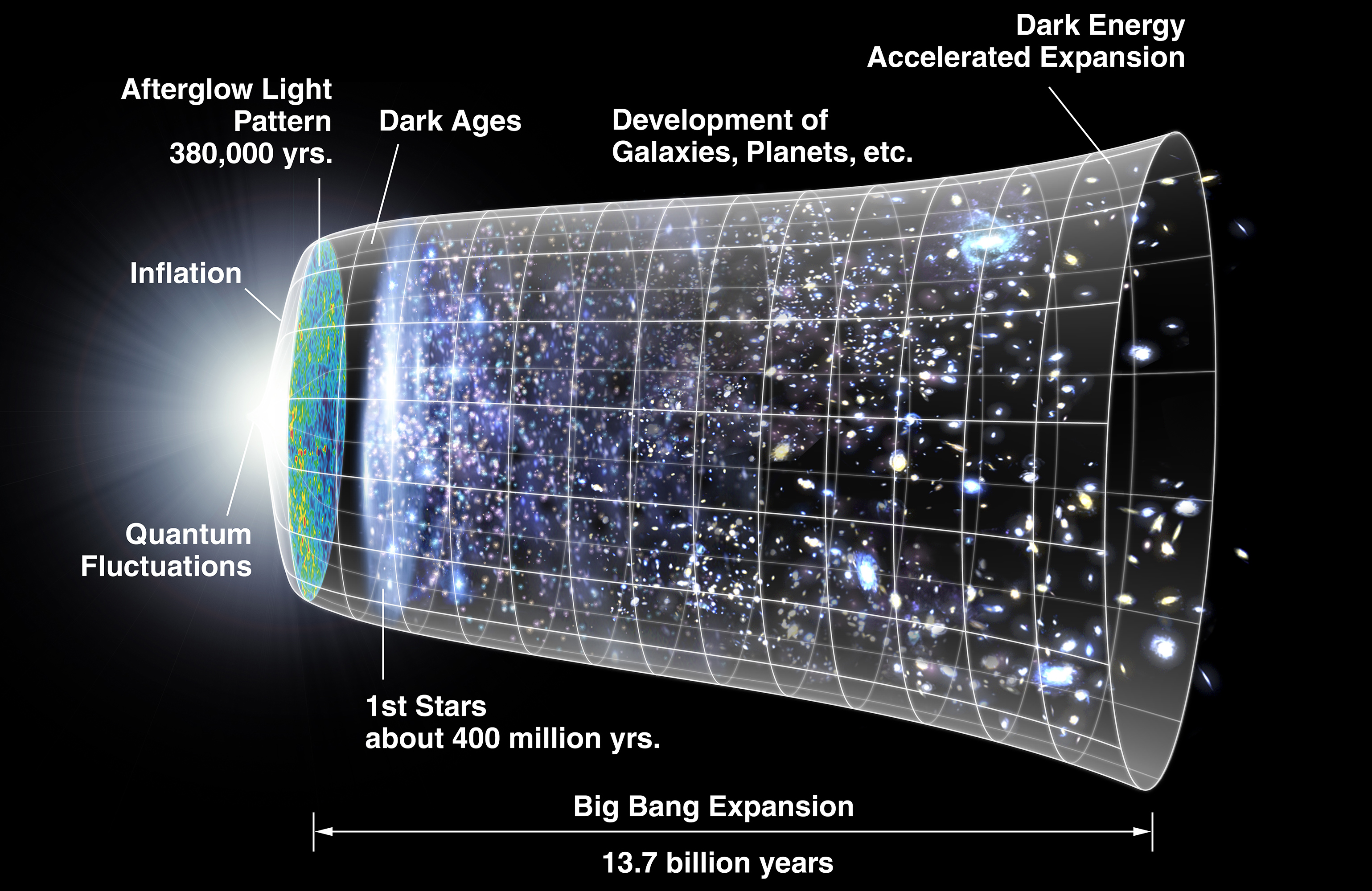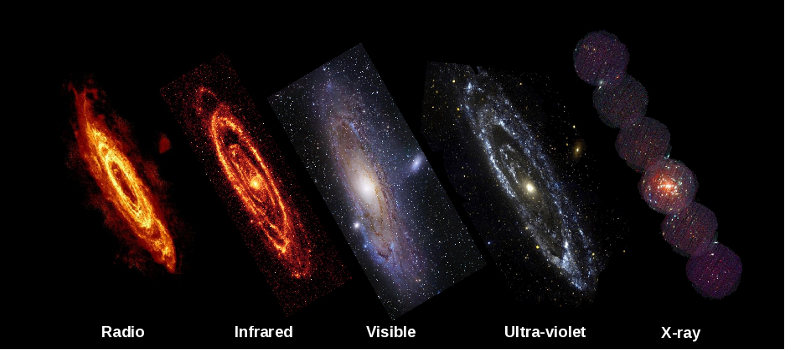Section 4.1: How did the Universe begin?
Big bang
Most astronomers agree that our Universe was formed about 13.7 billion years ago with the Big Bang. At the moment of the Big Bang, all of space was contained in a single extremely hot and dense point. Since then the Universe has expanded and cooled, causing matter to form.

(credit: "CMB Timeline300 no WMAP" by NASA/WMAP Science Team - Original version: NASA; modified by Ryan Kaldari. Licensed under Public domain via Wikimedia Commons)
ACTIVITY: Watch this video about the beginning of the Universe.
Here's another video that explains the Big Bang in a more lighthearted way!
At the instant of its origin, the Universe was a very high energy environment and was immensely hot. Einstein’s famous equation E = mc2 tells us that energy (E) and matter (m) are interchangeable, with the conversion factor being the speed of light (c) squared.
In the early Universe, a fraction of a second after it began, sub-atomic particles of matter and antimatter were created spontaneously out of pure energy. In the earliest moments, all flavours of exotic particles were created in abundance, with almost equal amounts of matter and antimatter.
But note the phrase 'almost equal'. If the Universe had contained exactly equal amounts of matter and antimatter, then as the Universe rapidly cooled the particles and anti-particles would all have annihilated each other. This would have occured in the first fraction of a second after the Big Bang, leaving nothing except photons to exist throughout the Universe.
The fact that we do see matter around us today indicates that there was a slight excess of matter over antimatter, by about one part in a billion, in those earliest moments. So, for every billion matter and anti-matter particles that annihilated each other, just one particle of matter was left over. That tiny imbalance is what would subsequently allow the formation of all the galaxies, stars and planets that we observe throughout space.
A few millionths of a second after the Big Bang, familiar protons and neutrons began to form in the Universe from the particles left over after the initial flurry of annihilations.
Once formed, these continuously converted from one to the other, but since neutrons are slightly more massive than protons, the conversion of neutrons into protons happened more often than protons converted into neutrons. As a result, the positively charged protons began to outnumber their neutral counterparts, the neutrons.
Then, by the time the Universe was about 100 seconds old, they stopped interacting further, freezing out with a ratio of about 7 protons for every 1 neutron in the Universe. The Universe as a whole remained electrically neutral, since every positively charged proton was balanced by the existence of a negatively charged electron.
Over the next few minutes, protons and neutrons combined to form the first atomic nuclei. About three-quarters (by mass) remained as single protons (hydrogen nuclei) but most of the remaining one-quarter ended up as nuclei of helium-4 (comprising 2 protons and 2 neutrons), with tiny fractions of other light-weight isotopes such as deuterium, helium-3 and lithium-7.
Nothing much then happened until the Universe reached an age of around three hundred thousand years old. At this time, the Universe was cool enough for electrons to combine with nuclei to form the first atoms in the Universe. This 'epoch of recombination' as it is known, marks the furthest back in time that we can hope to see in the Universe. The light that we see today throughout space as the Cosmic Microwave Background Radiation, is the light from this epoch that’s been redshifted by the expansion of the Universe ever since.
ACTIVITY: If you have some small pieces of LEGO, or similar building blocks, why not build your own Universe following these instructions.

